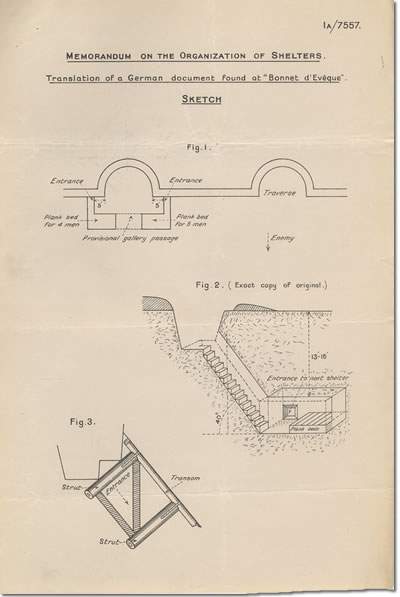
German trenchesFor the majority of the war, the Germans had the arguably easier defensive role. As a result they spent a lot of time and effort in constructing their trench system. Just how well constructed they were started to become clear to the Allies from 1916 onwards as they started to capture some of the German trenches. Although the actual trenches differed little from their own, the Allies found dug-outs up to 20 feet underground, often reinforced in concrete to prevent collapse and able to accommodate many men in relative comfort. These shelters often had facilities such as cookers, a generator to provide electricity and anti-gas curtains. The German trenches were also very well protected by barbed wire. This was staked in front of the trenches to slow down any advancing attack made by the infantry and proved very effective. Also well used by the Germans was the system of defence in depth. Realising that although trenches were hard to attack, they were not impregnable, the Germans started to develop the concept of strength in depth. This meant building another trench system one or two miles behind the front line which could be brought into use if necessary. This proved extremely effective and was one of the reasons why a stalemate developed. It was not until the Allies started to develop more effective artillery techniques, such as the concept of the ‘creeping bombardment’ and counter-battery, and started to tie in the work of all the different branches of the armed forces more successfully that any progress was made.  Extract of a Memo giving details of German trench construction. (DUL ref: Lowe Papers, file A4) |